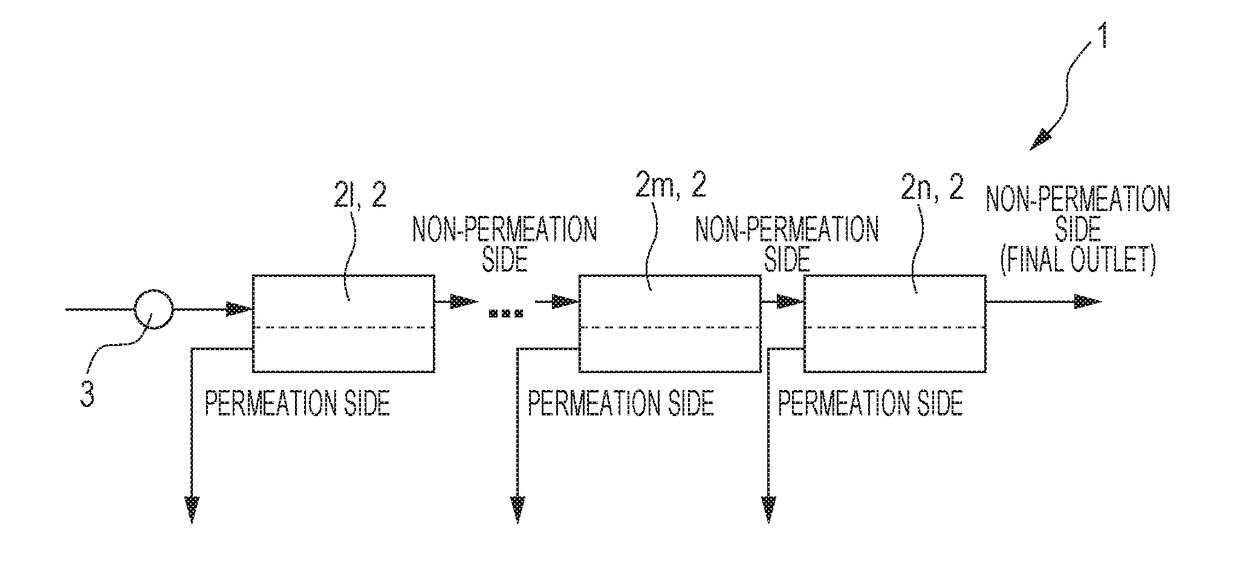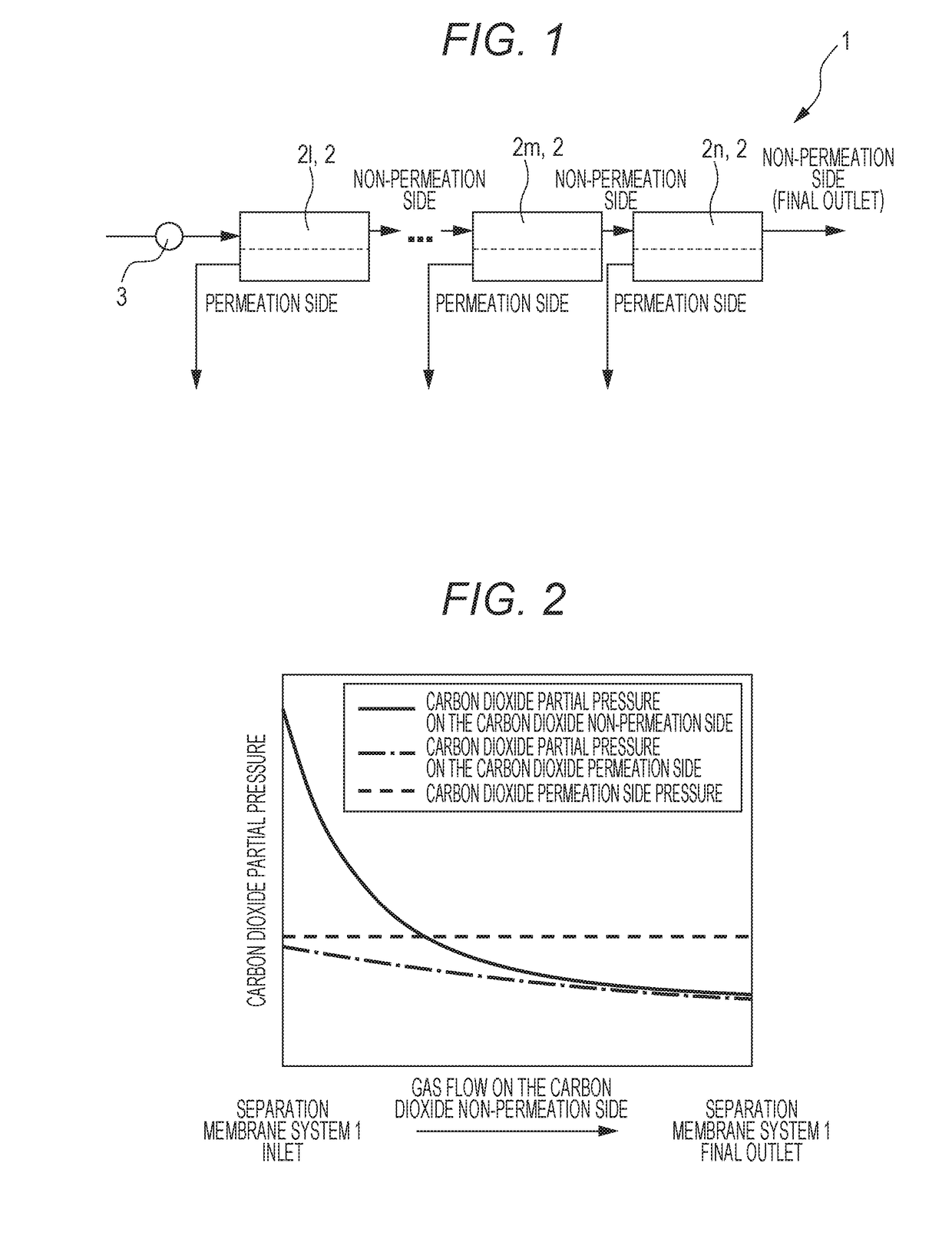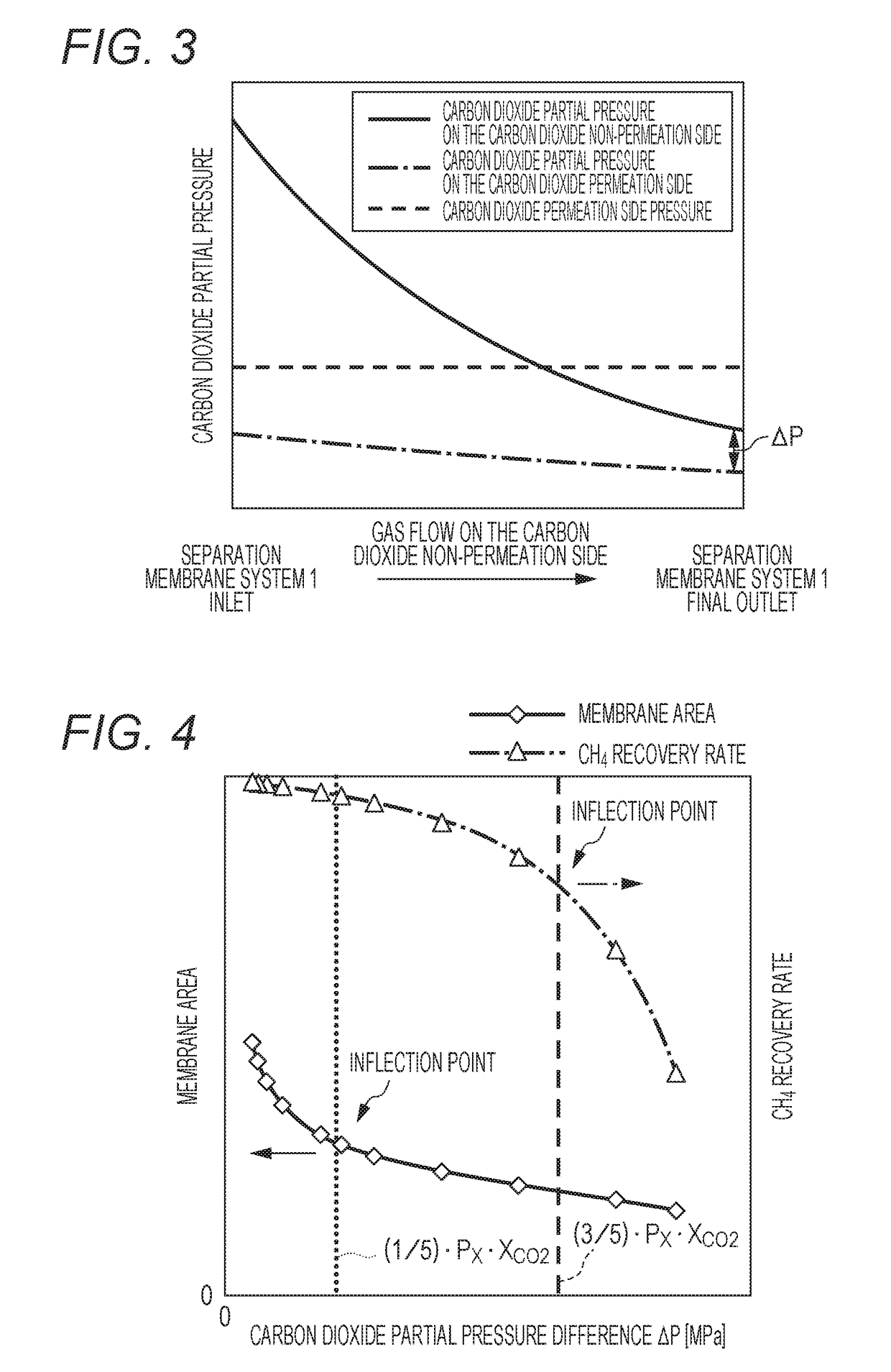Method for separating carbon dioxide
- Summary
- Abstract
- Description
- Claims
- Application Information
AI Technical Summary
Benefits of technology
Problems solved by technology
Method used
Image
Examples
Embodiment Construction
[0073]Hereinafter, as to one example of the embodiments of the present invention, a method for separating carbon dioxide according to the present invention will be described by using a separation membrane system 1 shown in FIG. 1. Further, in the equation (for example, Formula (I), and the like) mentioned in the present application, for convenience, the expression “·” (representing multiplying) may be omitted, such that “PX·XCO2” is expressed as “PXXCO2”.
[0074]FIG. 1 is a diagram showing a separation membrane system 1 in which a method for separating carbon dioxide according to the present invention is performed. The separation membrane system 1 shown in FIG. 1 shows a system in which an arbitrary number (stage) of single-kind inorganic separation membranes 2, which have an ideal separation factor (described later) common to each other, are arranged. Further, as a contact mode (flow model) of the gas flow on the high pressure side (non-permeation side) and the gas flow on the low pr...
PUM
| Property | Measurement | Unit |
|---|---|---|
| Partial pressure | aaaaa | aaaaa |
| Pressure | aaaaa | aaaaa |
| Mole fraction | aaaaa | aaaaa |
Abstract
Description
Claims
Application Information
 Login to View More
Login to View More - R&D
- Intellectual Property
- Life Sciences
- Materials
- Tech Scout
- Unparalleled Data Quality
- Higher Quality Content
- 60% Fewer Hallucinations
Browse by: Latest US Patents, China's latest patents, Technical Efficacy Thesaurus, Application Domain, Technology Topic, Popular Technical Reports.
© 2025 PatSnap. All rights reserved.Legal|Privacy policy|Modern Slavery Act Transparency Statement|Sitemap|About US| Contact US: help@patsnap.com



